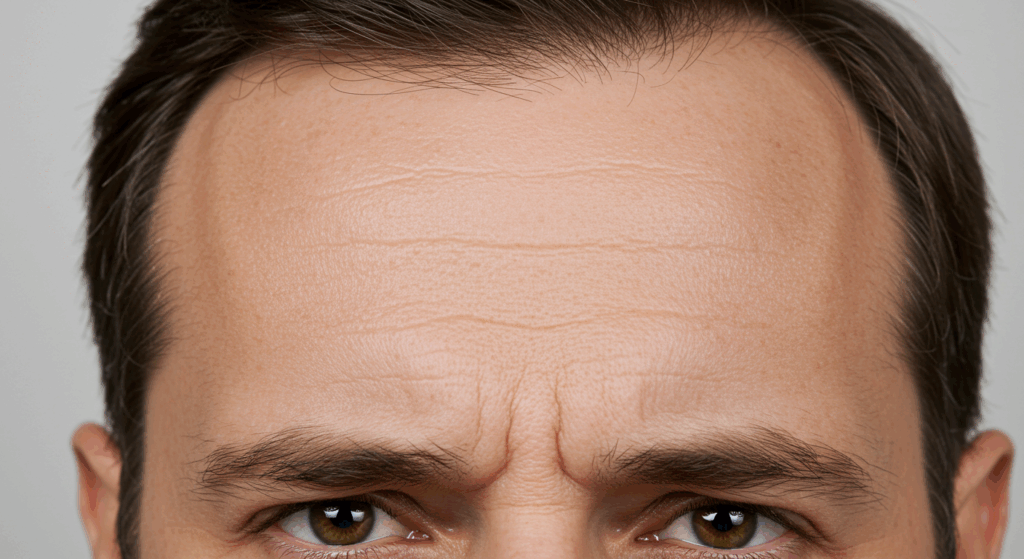La caída del cabello, conocida médicamente como alopecia, es una preocupación frecuente que afecta a personas de todas las edades y géneros. Para muchas personas, en particular para quienes experimentan un adelgazamiento significativo del cabello o calvicie, puede provocar un considerable malestar psicológico y afectar la autoestima. Antalya, con su creciente reputación como destino de turismo médico, se ha convertido en una opción popular para quienes buscan soluciones efectivas de restauración capilar. Desde la perspectiva de un cirujano especializado en trasplante capilar y tratamientos relacionados, comprender a fondo las diversas causas y clasificaciones de la caída del cabello es fundamental para un diagnóstico preciso y la selección de las estrategias más adecuadas para el recrecimiento capilar.
La caída del cabello no es una entidad única, sino un síntoma con diversas etiologías subyacentes. Puede manifestarse con diversos patrones y grados de gravedad, influenciados por una compleja interacción de predisposición genética, fluctuaciones hormonales, afecciones médicas, factores de estilo de vida e influencias ambientales. Por lo tanto, una evaluación integral es esencial para identificar el tipo específico de caída del cabello y guiar el desarrollo de un plan de tratamiento individualizado.

Tipos y causas comunes de la caída del cabello
Existen varios tipos distintos de pérdida de cabello, cada uno con su propio patrón característico y mecanismos subyacentes:
Alopecia androgenética (AGA)
También conocida como calvicie de patrón masculino o calvicie de patrón femenino, la AGA es la causa más común de pérdida de cabello en todo el mundo. Es una afección genética que se caracteriza por una miniaturización progresiva de los folículos pilosos, lo que resulta en cabellos más cortos y finos y, finalmente, en la detención completa del crecimiento del cabello en las zonas afectadas.
- Mecanismo: La AGA se debe principalmente a los efectos de la dihidrotestosterona (DHT), una potente hormona androgénica. En personas con predisposición genética, la DHT se une a los receptores de los folículos pilosos, provocando su encogimiento (miniaturización) con el tiempo. Esta miniaturización conlleva un ciclo de crecimiento del cabello más corto (fase anágena) y una fase de caída más larga (fase telógena), lo que resulta en cabellos más finos y en menor cantidad.
- Patrón: En los hombres, la AGA suele presentarse con una línea de implantación capilar en retroceso (recesión temporal) y adelgazamiento en la coronilla (vértice). Estas áreas pueden eventualmente fusionarse para formar una calvicie completa en la parte superior del cuero cabelludo. En las mujeres, la AGA suele manifestarse como un adelgazamiento difuso del cabello en el cuero cabelludo, permaneciendo generalmente intacta la línea frontal del cabello.
- Predisposición genética: Los antecedentes familiares de pérdida de cabello constituyen un factor de riesgo significativo para desarrollar AGA. Diversos genes intervienen en la herencia de esta afección.
Efluvio telógeno (ET)
El efluvio telógeno es una forma temporal de pérdida de cabello que se produce cuando un gran número de folículos pilosos entran prematuramente en la fase de caída (telógena) del ciclo de crecimiento del cabello. Esto suele provocar un aumento notable de la caída del cabello, que suele ocurrir varios meses después del evento desencadenante.
- Desencadenantes: La TE puede ser desencadenada por diversos factores estresantes fisiológicos o psicológicos, entre ellos:
- Estrés significativo: Angustia emocional, acontecimientos importantes de la vida o trauma psicológico.
- Cirugía o trauma: Procedimientos quirúrgicos mayores o lesiones físicas.
- Parto (Efluvio Postparto): Los cambios hormonales después del embarazo pueden provocar una caída temporal del cabello.
- Enfermedad y fiebre: Infecciones graves o fiebre alta.
- Deficiencias dietéticas: Niveles bajos de hierro, zinc, biotina o proteínas.
- Medicamentos: Ciertos medicamentos, como los betabloqueantes, los antidepresivos y los retinoides.
- Trastornos de la tiroides: Tanto el hipotiroidismo (tiroides hipoactiva) como el hipertiroidismo (tiroides hiperactiva) pueden contribuir a la TE.
- Pérdida de peso repentina: Pérdida de peso rápida o significativa.
- Patrón: La TE generalmente se presenta como un adelgazamiento difuso del cabello en todo el cuero cabelludo, en lugar de parches de calvicie diferenciados.
- Pronóstico: El efluvio telógeno generalmente se resuelve por sí solo y el crecimiento del cabello normalmente se reanuda al cabo de unos meses una vez que se aborda el desencadenante subyacente.
Alopecia areata (AA)
La alopecia areata es un trastorno autoinmune en el que el sistema inmunológico del cuerpo ataca por error los folículos pilosos, lo que provoca la caída del cabello.
- Mecanismo: Las células inmunitarias (linfocitos) se infiltran en los folículos pilosos, alterando el ciclo normal de crecimiento del cabello. Los desencadenantes exactos de esta respuesta autoinmunitaria no se comprenden por completo, pero se cree que involucran factores genéticos y ambientales.
- Patrón: La alopecia androgenética (AA) suele presentarse con una o más zonas pequeñas, redondas u ovaladas de pérdida de cabello en el cuero cabelludo. En algunos casos, puede progresar a una pérdida de cabello más extensa (alopecia total, que afecta a todo el cuero cabelludo) o incluso a la pérdida total del vello corporal (alopecia universal).
- Pronóstico: La evolución de la alopecia androgenética es impredecible. El cabello puede volver a crecer espontáneamente o la caída del cabello puede ser persistente o recurrente.
Alopecia por tracción
La alopecia por tracción es la pérdida de cabello causada por una tensión prolongada o repetitiva en los folículos pilosos, a menudo debido a peinados apretados como trenzas, colas de caballo, tejidos o extensiones.
- Mecanismo: La fuerza de tracción constante sobre los tallos del cabello puede dañar los folículos pilosos con el tiempo, provocando inflamación, cicatrices y, finalmente, pérdida permanente del cabello.
- Patrón: La pérdida de cabello generalmente ocurre a lo largo de la línea del cabello y en las áreas donde la tensión es mayor.
- Prevención: Evitar los peinados apretados y reducir la tensión en los folículos pilosos es crucial para prevenir la alopecia por tracción. Una intervención temprana puede permitir el recrecimiento del cabello una vez que se alivia la tensión.
Alopecia cicatricial (alopecia cicatricial)
La alopecia cicatricial se refiere a un grupo de trastornos raros de pérdida de cabello caracterizados por la inflamación y destrucción de los folículos pilosos, lo que provoca cicatrices permanentes y pérdida irreversible del cabello.
- Causas: Estos trastornos pueden ser causados por diversas afecciones inflamatorias, entre ellas el liquen plano pilar, el lupus eritematoso discoide y la foliculitis decalvante.
- Patrón: El patrón de pérdida de cabello varía según el trastorno de alopecia cicatricial específico.
- Tratamiento: El diagnóstico y el tratamiento tempranos de la inflamación subyacente son cruciales para prevenir una mayor destrucción del folículo piloso. El trasplante capilar generalmente no es eficaz en zonas con cicatrices.

Opciones de restauración capilar en Antalya: la perspectiva de un dermatólogo
Antalya se ha convertido en un destino destacado para los procedimientos de restauración capilar, ofreciendo una gama de opciones quirúrgicas y no quirúrgicas. dermatólogo Especializándome en este campo, enfatizo la importancia de una evaluación integral para determinar el enfoque más adecuado para cada individuo.
Restauración Quirúrgica del Cabello: Trasplante Capilar
El trasplante capilar es un procedimiento quirúrgico que consiste en extraer folículos pilosos de una zona donante (normalmente la parte posterior o lateral del cuero cabelludo, donde el cabello es genéticamente resistente a la DHT en casos de AGA) y trasplantarlos a las zonas con calvicie o pérdida de cabello. Las técnicas modernas de trasplante capilar buscan resultados de aspecto natural con altas tasas de supervivencia del injerto. Los dos métodos principales de trasplante capilar son el trasplante de unidades foliculares (FUT) y la extracción de unidades foliculares (FUE).
Trasplante de unidades foliculares (FUT)
- Procedimiento: La FUT consiste en la extirpación quirúrgica de una tira de cuero cabelludo de la zona donante, generalmente la parte posterior de la cabeza. Posteriormente, la tira se disecciona meticulosamente al microscopio para separar las unidades foliculares individuales (agrupaciones naturales de uno a cuatro folículos pilosos). Estas unidades foliculares se implantan en pequeñas zonas receptoras creadas en las zonas con calvicie.
- Ventajas: La técnica FUT permite obtener una gran cantidad de injertos en una sola sesión, lo que la hace adecuada para personas con pérdida capilar extensa. La tasa de transección (daño a los folículos pilosos durante la extracción) suele ser baja con cirujanos experimentados.
- Desventajas: La FUT deja una cicatriz lineal en la zona donante, visible si el cabello se mantiene muy corto. El periodo de recuperación puede ser ligeramente mayor que el de la FUE.
Extracción de unidades foliculares (FUE)
- Procedimiento: La técnica FUE consiste en extraer unidades foliculares individuales directamente de la zona donante con un pequeño punzón (normalmente de 0,6 a 1,0 mm de diámetro). Los injertos extraídos se implantan posteriormente en las zonas receptoras de las zonas con calvicie.
- Ventajas: La técnica FUE no deja una cicatriz lineal, sino que solo deja pequeñas cicatrices puntiformes en la zona donante, que suelen ser imperceptibles incluso con cabello corto. Es una buena opción para quienes prefieren llevar el cabello muy corto o tienen un cuero cabelludo denso que dificulta la FUT.
- Desventajas: La técnica FUE suele producir menos injertos por sesión que la FUT, lo que la hace potencialmente menos adecuada para la pérdida capilar extensa en un solo procedimiento. El procedimiento puede requerir más tiempo y la tasa de transección puede ser mayor si lo realiza un cirujano sin experiencia.
Implantación directa de cabello (DHI)
La DHI es una variante de la técnica FUE que utiliza un instrumento especializado similar a un bolígrafo para crear simultáneamente la zona receptora e implantar el folículo piloso. Los defensores de la DHI sugieren que esta técnica puede mejorar la supervivencia del injerto y permitir un mayor control sobre el ángulo y la profundidad de la implantación. Sin embargo, el principio fundamental de la extracción e implantación de unidades foliculares sigue siendo el mismo que en la FUE.
Consideraciones para el trasplante capilar en Antalya
Al considerar un trasplante de cabello en Antalya, varios factores son cruciales para un resultado exitoso:
- Cómo elegir un cirujano calificado y con experiencia: Seleccione un cirujano certificado con amplia experiencia en trasplante capilar y un historial comprobado de resultados naturales. Revise fotos del antes y el después y los testimonios de pacientes.
- Reputación y acreditación de la clínica: Asegúrese de que la clínica tenga buena reputación, cumpla con altos estándares de higiene y seguridad e idealmente cuente con las acreditaciones pertinentes.
- Consulta Integral: Una consulta preoperatoria exhaustiva es esencial para evaluar la extensión y el patrón de la pérdida de cabello, discutir las opciones de tratamiento, evaluar la disponibilidad del área donante y desarrollar un plan quirúrgico personalizado.
- Expectativas realistas: Tenga en cuenta que el trasplante capilar puede mejorar significativamente la densidad y la apariencia del cabello, pero es posible que no recupere por completo la densidad capilar de la juventud. Es posible que se requieran varias sesiones para lograr el resultado deseado, especialmente en casos de pérdida capilar extensa.
- Cuidados postoperatorios: Siga estrictamente las instrucciones postoperatorias del cirujano para optimizar la supervivencia del injerto y promover la cicatrización. Esto incluye evitar actividades extenuantes, proteger el cuero cabelludo de la exposición solar y seguir pautas específicas de lavado y cuidado capilar.

Opciones de restauración capilar sin cirugía en Antalya
Si bien el trasplante de cabello es una solución a largo plazo muy eficaz para muchos tipos de pérdida de cabello, varios tratamientos no quirúrgicos también pueden desempeñar un papel importante en la restauración del cabello, ya sea como terapias independientes o como tratamientos complementarios a los procedimientos quirúrgicos.
Terapias médicas
- Minoxidil (Rogaine): El minoxidil es un medicamento tópico de venta libre que se aplica directamente en el cuero cabelludo. Se cree que actúa dilatando los vasos sanguíneos del cuero cabelludo, mejorando el flujo sanguíneo a los folículos pilosos y estimulando el crecimiento del cabello. Es eficaz tanto para la calvicie de patrón masculino como para la de patrón femenino.
- Finasterida (Propecia): La finasterida es un medicamento oral de venta con receta que inhibe la producción de DHT. Se utiliza principalmente para tratar la calvicie de patrón masculino y puede ayudar a frenar la caída del cabello y promover su regeneración en algunos hombres. Las mujeres en edad fértil no deben manipular comprimidos de finasterida triturados o rotos debido a los posibles riesgos para el feto masculino.
- Dutasterida (Avodart): La dutasterida es otro medicamento oral de prescripción que inhibe las isoformas tipo 1 y tipo 2 de la enzima 5-alfa reductasa, que convierte la testosterona en DHT. Es más potente que la finasterida para reducir los niveles de DHT y, en algunos casos, puede usarse fuera de indicación para la caída del cabello.
- Espironolactona: La espironolactona es un medicamento oral de prescripción que se utiliza principalmente como diurético y antihipertensivo. También tiene efectos antiandrógenos y puede usarse fuera de indicación para tratar la alopecia androgénica femenina al bloquear los receptores androgénicos.
- Terapia láser de baja intensidad (LLLT): Los dispositivos LLLT, como peines, gorras y cascos láser, emiten una luz láser de baja intensidad que se cree que estimula los folículos pilosos y promueve el crecimiento del cabello. El mecanismo exacto no se comprende del todo, pero podría implicar un aumento del flujo sanguíneo y del metabolismo celular en el cuero cabelludo.
- Terapia con plasma rico en plaquetas (PRP): La terapia con PRP consiste en extraer una pequeña muestra de sangre del paciente, procesarla para concentrar las plaquetas (que contienen factores de crecimiento) y luego inyectar el PRP en el cuero cabelludo. Se cree que los factores de crecimiento del PRP estimulan la actividad del folículo piloso y promueven el crecimiento del cabello.
Micropigmentación del cuero cabelludo (SMP)
El SMP es un procedimiento de tatuaje cosmético no quirúrgico que consiste en inyectar pequeños puntos de pigmento en el cuero cabelludo para crear la ilusión de folículos pilosos. No es un tratamiento para el recrecimiento capilar, pero puede camuflar eficazmente las zonas calvas y las zonas con pérdida de cabello, dando la apariencia de una cabeza rapada o añadiendo densidad al cabello existente.
Sistemas capilares (pelucas y postizos)
Los sistemas capilares son soluciones no quirúrgicas que implican el uso de postizos artificiales o naturales para disimular la caída del cabello. Si bien no promueven el crecimiento del cabello, los sistemas capilares modernos pueden tener un aspecto muy natural y proporcionar una mejora inmediata en la apariencia.
Determinar el mejor enfoque para la restauración capilar en Antalya
La estrategia óptima de restauración del cabello depende de varios factores individuales:
- Tipo y causa de la caída del cabello: Un diagnóstico preciso es crucial para seleccionar el tratamiento más eficaz.
- Extensión y patrón de la pérdida del cabello: El grado de adelgazamiento o calvicie influirá en el número de injertos necesarios para el trasplante o la cobertura requerida con opciones no quirúrgicas.
- Objetivos y expectativas del paciente: Comprender el resultado deseado por el paciente es esencial para desarrollar un plan de tratamiento realista.
- Disponibilidad del área donante (para trasplante): La densidad y la calidad del cabello en la zona donante determinarán la cantidad de injertos que se pueden recolectar.
- Presupuesto y disposición para someterse a la cirugía: Las opciones quirúrgicas y no quirúrgicas tienen diferentes costos y niveles de invasividad.
- Estilo de vida y compromiso con el mantenimiento: Algunos tratamientos, como las terapias médicas, requieren una adherencia a largo plazo.
Una consulta integral con un especialista en restauración del cabello en Antalya es el primer paso para determinar el enfoque más apropiado y eficaz para abordar los problemas individuales de pérdida de cabello.
El futuro de la restauración capilar en Antalya
El campo de la restauración capilar está en constante evolución, con investigación continua sobre nuevas tecnologías y terapias. En Antalya, a medida que el sector del turismo médico se expande, podemos esperar una mayor adopción de técnicas avanzadas, como el trasplante capilar robótico, las terapias con células madre y los nuevos sistemas de administración de fármacos. Mantenerse al día con estos avances y mantener altos estándares de atención al paciente será crucial para que Antalya se mantenga como un destino líder en restauración capilar.

Conclusión: Adoptar soluciones para el recrecimiento del cabello en Antalya
La caída del cabello es un problema complejo con diversas causas y manifestaciones. Antalya ofrece una amplia gama de soluciones de restauración capilar, desde técnicas quirúrgicas avanzadas de trasplante capilar como FUT y FUE hasta diversas terapias médicas y cosméticas no quirúrgicas. Al consultar con especialistas cualificados y con experiencia en restauración capilar en Antalya, las personas pueden recibir diagnósticos precisos, explorar opciones de tratamiento personalizadas y emprender el camino hacia un crecimiento capilar efectivo y una confianza renovada. La clave para una restauración capilar exitosa reside en comprender a fondo la causa subyacente de la caída del cabello, tener expectativas realistas y un enfoque colaborativo entre el paciente y el equipo de restauración capilar.
Descubra la experiencia de la Dra. Ebru Okyay, su médico de confianza. dermatólogo en AntalyaYa sea que esté buscando abordar problemas médicos de la piel o mejorar su belleza natural con tratamientos cosméticos, el Dr. Okyay está aquí para ayudarlo. Con atención personalizada y técnicas avanzadas, lograr sus objetivos para la piel nunca ha sido tan fácil.
